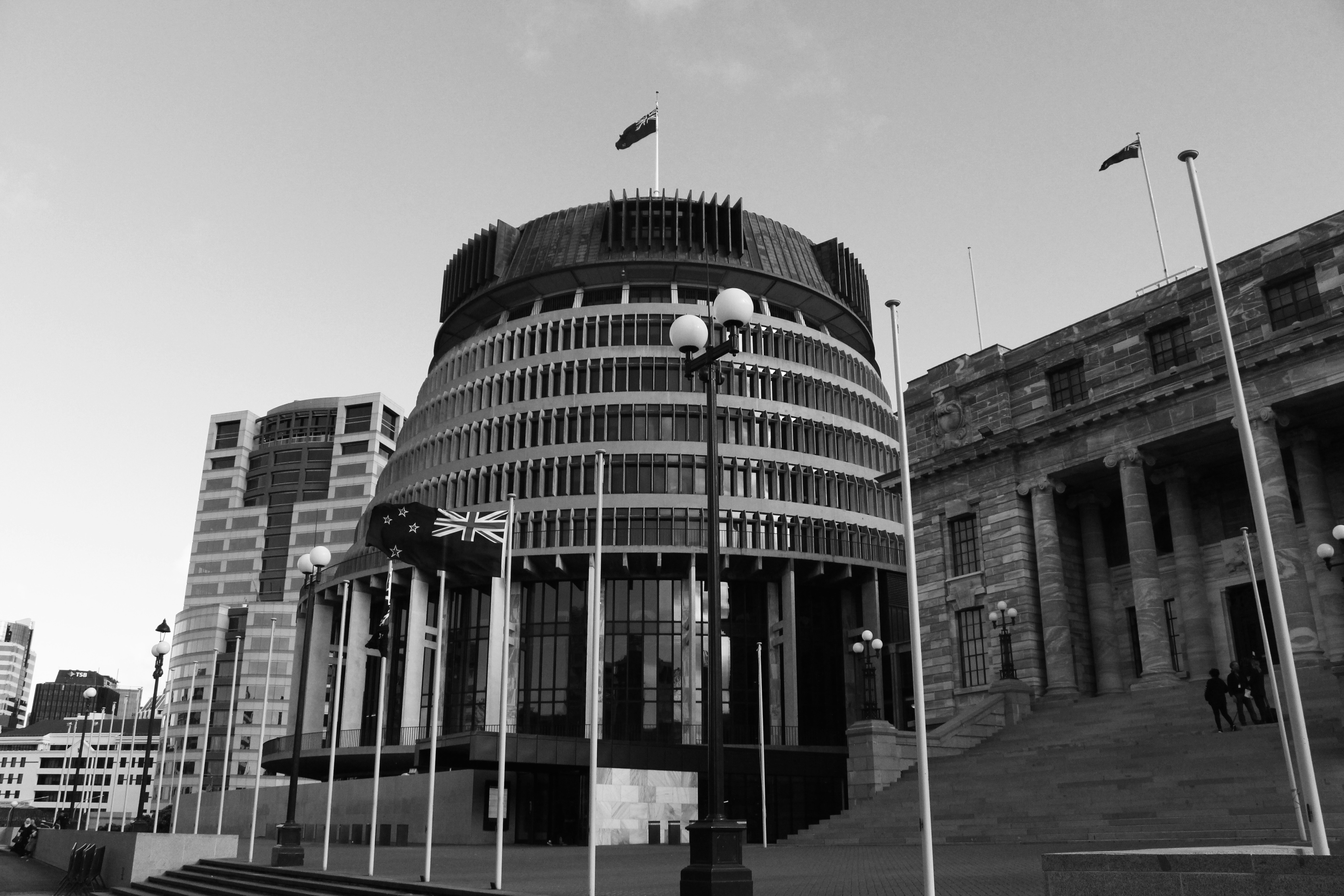Social investment in action
ImpactLab highlights how tailored housing reduced hospital stays by 92% for people with serious mental health conditions. This model saved $4.9 million in hospital costs and delivered an estimated $4.50 social return per dollar invested.


"We estimated that through housing these 120 people, the local former DHB was able to free up $4.9million of hospital capacity."
"We estimated that through housing these 120 people, the local former DHB was able to free up $4.9million of hospital capacity."
Nights in Hospital Before Housing

Nights in Hospital After Housing

Above is one of the most striking pictures I’ve seen in the past four years at ImpactLab. It shows the experience of a group of 120 people with serious mental health conditions interacting with the hospital system.
The ‘before’ picture shows the number of nights that these people spent in hospital over a one-year period. Each line represents one person’s experience. On average, they stayed in hospital for 122 nights of the year. For some it was as many as 300.
The ‘after’ picture shows what happened to hospital stays after these people moved into tailored, long-term housing with a Community Housing Provider under their supportive landlord programme. Average nights in hospital decreased 92% from 122 to 10. Over the next five years, they stayed low.
We estimated that through housing these 120 people, the local former DHB was able to free up $4.9million of hospital capacity. Accounting for other social benefits people received from getting appropriate housing, such as reducing addiction and offending and improving physical health, we estimate a social return on investment for NZ of $4.50 per dollar invested in the programme.
So what happened in between these two pictures?
This particular housing model has a few core elements on paper, though of course implementation in practice has taken years of honing through experience by the housing provider and hospital staff.
- The housing is tailored to the particular needs and priorities of the tenants living in it. For example, housing is designed so you don’t have to walk past the windows of six other houses to get to where you live.
- The tenancy management model flexes up and down based on need and has a strong focus on helping tenants to sustain their tenancy. For example, tenancy managers proactively offer more support if they are noticing a tenant’s mental health is starting to decline.
- Hospital staff have a good understanding of the population that the community housing provider can best support, and have established a smooth process of referral and handover. Unsurprisingly, this service is highly oversubscribed.
- The model is funded through Income-Related Rent Subsidy (HUD), with significant top-up funding from Te Whatu Ora for the additional support needed by this population.
As far as I’m aware, this kind of model only exists in Auckland and Christchurch (let me know if I’m wrong, I’d love for that to be the case!)
The next three questions
With this kind of social analytics, the metrics always generate more questions than they answer. “Feedback thinking”, a core principle of social investment, is about using the data you have to launch on ongoing process of inquiry that can inform the next decision.
Our next three questions for this analysis are:
- What was the living situation of these tenants when they were spending an average of 110 nights a year in hospital? Anecdotally, we understand this to be inappropriate temporary accommodation or homelessness.
- Bednights stayed low even after many tenants had left the community housing. Where did they go next and why did the benefits persist?
- How many other Kiwis are spending a third of their year in hospital when they could be spending it at home?
Insights
For the policymakers:
Many policymakers have noted to us that it’s difficult to get agencies who are funded on annual budget cycles to invest in long term outcomes when the benefits of that spending primarily accrue to another agency, and take many years to kick in. This example contributes to an emerging hypothesis we are forming at ImpactLab, that there are a number of investment opportunities where benefits can be realised quite quickly, and within the silo that is spending the money (in this case hospitals).
For the analysts:
This analysis was only possible because the local former DHB chose to share bednights data with the provider they were contracting to try and reduce them, on a framework of user consent. This is one example of the many outcomes-related insights government can gain by sharing data with community service providers to enable a linking between intervention and outcome. For a deeper data-driven unpacking of the housing-hospital linkage, check out the work of Dr Nevil Pierce, whose analytical approach helped guide our analysis.
For the frontline workers:
This story shows the value of ‘knowing your niche’, and identifying where co-ordination with another organisation can drive most value for the people you serve. In housing provision specifically, there is generally a focus on scale, but in ImpactLab’s experience when it comes to housing people with complex lives, the value of serving a particularly niche well tends to be underestimated.
Nights in Hospital Before Housing

Nights in Hospital After Housing

Above is one of the most striking pictures I’ve seen in the past four years at ImpactLab. It shows the experience of a group of 120 people with serious mental health conditions interacting with the hospital system.
The ‘before’ picture shows the number of nights that these people spent in hospital over a one-year period. Each line represents one person’s experience. On average, they stayed in hospital for 122 nights of the year. For some it was as many as 300.
The ‘after’ picture shows what happened to hospital stays after these people moved into tailored, long-term housing with a Community Housing Provider under their supportive landlord programme. Average nights in hospital decreased 92% from 122 to 10. Over the next five years, they stayed low.
We estimated that through housing these 120 people, the local former DHB was able to free up $4.9million of hospital capacity. Accounting for other social benefits people received from getting appropriate housing, such as reducing addiction and offending and improving physical health, we estimate a social return on investment for NZ of $4.50 per dollar invested in the programme.
So what happened in between these two pictures?
This particular housing model has a few core elements on paper, though of course implementation in practice has taken years of honing through experience by the housing provider and hospital staff.
- The housing is tailored to the particular needs and priorities of the tenants living in it. For example, housing is designed so you don’t have to walk past the windows of six other houses to get to where you live.
- The tenancy management model flexes up and down based on need and has a strong focus on helping tenants to sustain their tenancy. For example, tenancy managers proactively offer more support if they are noticing a tenant’s mental health is starting to decline.
- Hospital staff have a good understanding of the population that the community housing provider can best support, and have established a smooth process of referral and handover. Unsurprisingly, this service is highly oversubscribed.
- The model is funded through Income-Related Rent Subsidy (HUD), with significant top-up funding from Te Whatu Ora for the additional support needed by this population.
As far as I’m aware, this kind of model only exists in Auckland and Christchurch (let me know if I’m wrong, I’d love for that to be the case!)
The next three questions
With this kind of social analytics, the metrics always generate more questions than they answer. “Feedback thinking”, a core principle of social investment, is about using the data you have to launch on ongoing process of inquiry that can inform the next decision.
Our next three questions for this analysis are:
- What was the living situation of these tenants when they were spending an average of 110 nights a year in hospital? Anecdotally, we understand this to be inappropriate temporary accommodation or homelessness.
- Bednights stayed low even after many tenants had left the community housing. Where did they go next and why did the benefits persist?
- How many other Kiwis are spending a third of their year in hospital when they could be spending it at home?
Insights
For the policymakers:
Many policymakers have noted to us that it’s difficult to get agencies who are funded on annual budget cycles to invest in long term outcomes when the benefits of that spending primarily accrue to another agency, and take many years to kick in. This example contributes to an emerging hypothesis we are forming at ImpactLab, that there are a number of investment opportunities where benefits can be realised quite quickly, and within the silo that is spending the money (in this case hospitals).
For the analysts:
This analysis was only possible because the local former DHB chose to share bednights data with the provider they were contracting to try and reduce them, on a framework of user consent. This is one example of the many outcomes-related insights government can gain by sharing data with community service providers to enable a linking between intervention and outcome. For a deeper data-driven unpacking of the housing-hospital linkage, check out the work of Dr Nevil Pierce, whose analytical approach helped guide our analysis.
For the frontline workers:
This story shows the value of ‘knowing your niche’, and identifying where co-ordination with another organisation can drive most value for the people you serve. In housing provision specifically, there is generally a focus on scale, but in ImpactLab’s experience when it comes to housing people with complex lives, the value of serving a particularly niche well tends to be underestimated.

The Social Investment Agency: What we know so far
With SIA’s second funding pathway EOI now closed, we unpack what the Social Investment Agency is, what it aims to do, and what these changes mean for providers in the social sector, kicking off our new series on SIA and outcomes-based funding.

Part 2- Understanding the Intervention Logic
Part 2 of this series, unpacks the Intervention Logic, outlining how it differs from a Theory of Change and the role it plays in mapping programmes, evaluating outcomes, and supporting clear communication with stakeholders.

Part 1- Understanding the Theory of Change
In the first article in this two-part series we introduce the Theory of Change, a flexible framework that maps how services create impact. It explains its purpose, benefits, and why it’s a powerful tool for guiding, testing, and communicating change.

Why measuring social impact matters to funders and housing providers
Measuring social impact in housing helps funders and providers target services to residents’ real needs, improve wellbeing, reduce costs, and guide smarter decisions across the housing lifecycle with stronger outcomes for people and communities.
Get in touch
We help impact organisations know, show and grow their social impact. Let’s work together to do good, better!



